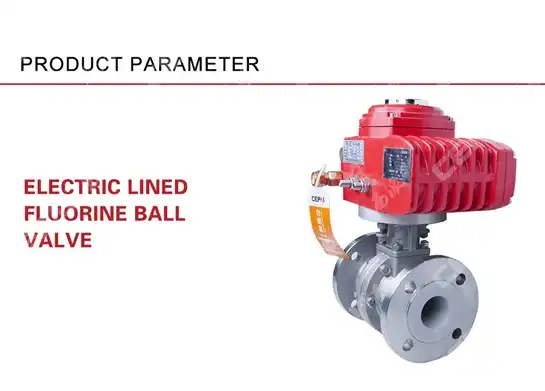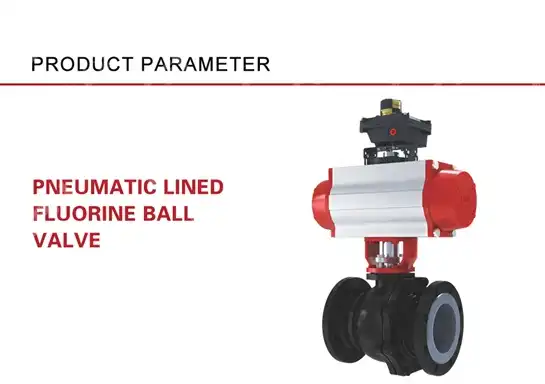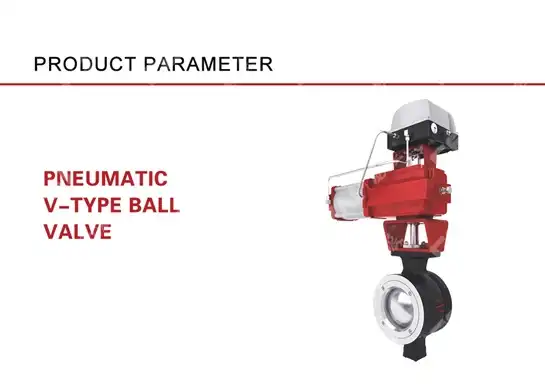Mastering Flow Characteristics with the Right Electric Ball Valve
Industrial operations across petrochemical, power generation, and water treatment facilities face a persistent challenge: achieving precise flow control while maintaining operational efficiency and safety standards. When critical processes demand exact fluid regulation, operators often struggle with valves that lack the responsiveness, accuracy, and reliability needed for optimal performance. The Electric Ball Valve emerges as a sophisticated solution, offering advanced flow characteristics that transform how industries manage fluid dynamics, ensuring seamless operations while reducing maintenance costs and enhancing system reliability through intelligent automation and precise control mechanisms.
Understanding Electric Ball Valve Flow Dynamics
-
Core Flow Characteristic Principles
Electric Ball Valves revolutionize flow control through their unique V-shaped sphere design, which provides superior truncation performance and exceptional fluid control capabilities. The ball valve mechanism operates on a simple yet highly effective principle where a rotating spherical closure with a central hole regulates flow by aligning or blocking the fluid path. When the Electric Ball Valve is positioned open, the hole in the ball aligns perfectly with the pipeline, allowing unrestricted fluid passage. Conversely, when rotated 90 degrees, the solid portion of the ball blocks the flow path completely, creating a tight seal that prevents any fluid leakage. The V-shaped sphere configuration of modern Electric Ball Valves offers distinct advantages over traditional round-port designs. This specialized geometry creates an equal percentage flow characteristic, meaning that the valve provides consistent flow control throughout its operating range. As the valve opens progressively, the V-notch allows for fine-tuned flow adjustment, making it ideal for applications requiring precise throttling capabilities. The electric actuator responds rapidly to control signals, typically within seconds, enabling operators to achieve the exact flow rates needed for their specific processes.
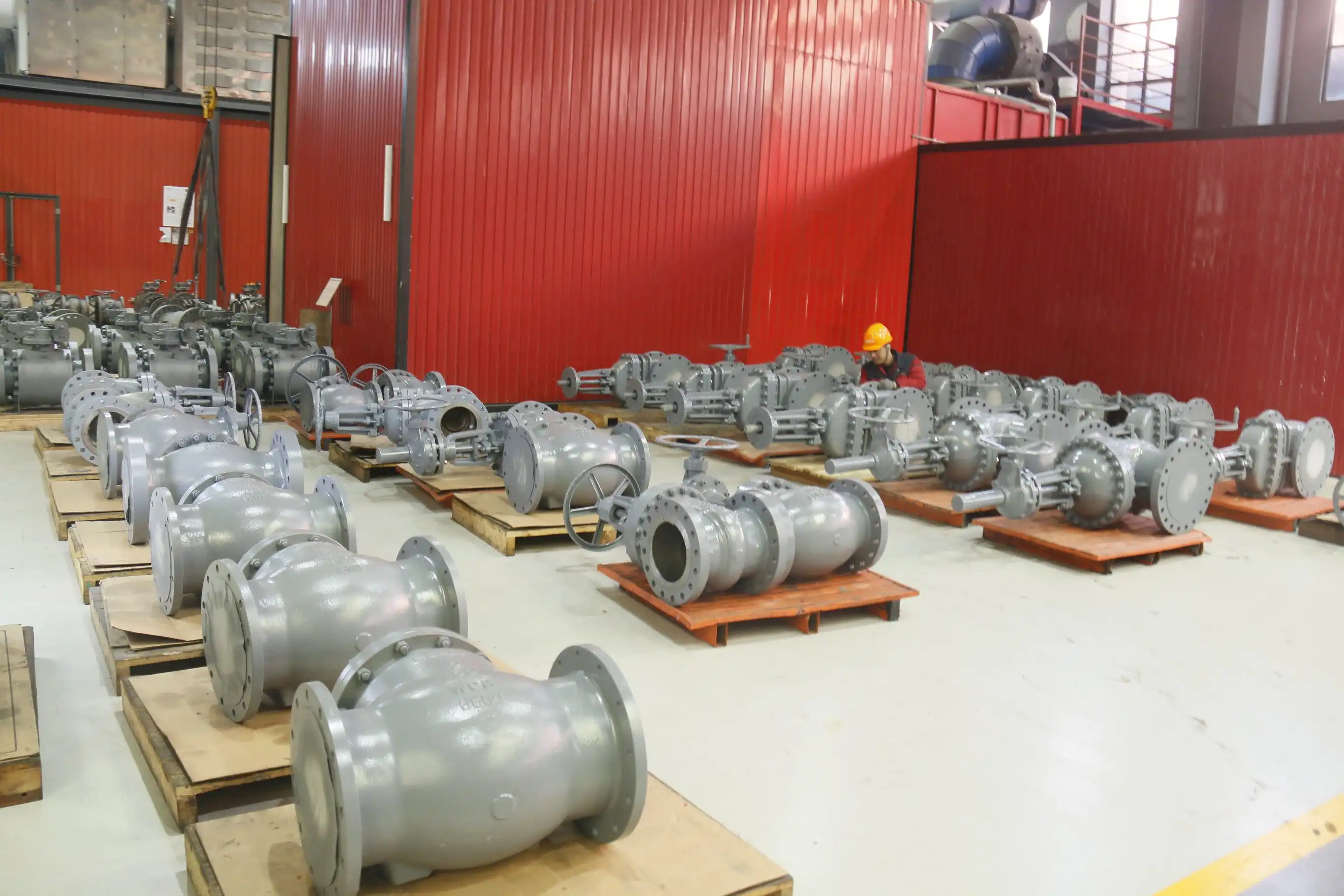
-
Advanced Actuator Integration Technology
The electric actuator system integrated with the Electric Ball Valve represents a significant advancement in valve technology. These actuators utilize sophisticated control electronics that can interpret 4-20mADC signals, providing seamless integration with modern process control systems. The actuator responds to control signals with exceptional precision, allowing operators to achieve exact positioning and maintain consistent flow characteristics even under varying pressure conditions. Electric Ball Valve actuators operate effectively across wide temperature ranges, typically from -30°C to +70°C, making them suitable for diverse industrial applications. The voltage flexibility of 220V and 380V systems ensures compatibility with existing electrical infrastructure in most facilities. The actuator's design incorporates advanced feedback mechanisms that continuously monitor valve position, providing real-time data to control systems and enabling predictive maintenance strategies that minimize unplanned downtime and optimize operational efficiency.
Precision Control Mechanisms in Electric Ball Valves
-
Equal Percentage Flow Characteristics
The equal percentage flow characteristic of Electric Ball Valves provides exceptional control stability across the entire operating range. This characteristic means that for each unit change in valve opening, the change in flow rate is proportional to the flow rate just before the change occurred. This relationship ensures smooth and predictable flow control, particularly important in processes where maintaining consistent pressure and temperature is critical for product quality and safety. Electric Ball Valves with equal percentage characteristics excel in applications where the system pressure drop across the valve varies significantly during operation. The valve maintains excellent control accuracy even when upstream and downstream conditions fluctuate, providing operators with reliable performance that traditional linear-characteristic valves cannot match. This superior flow control capability makes Electric Ball Valves indispensable in complex industrial processes requiring precise fluid management.
-
High-Precision Control Performance
The precision control capabilities of Electric Ball Valves stem from their advanced design features and sophisticated actuation systems. The metal seal and soft seal options available in these valves provide different performance characteristics suited to specific applications. Metal seals offer superior durability and temperature resistance, making them ideal for high-temperature applications, while soft seals provide excellent sealing performance for general industrial applications requiring zero leakage. Electric Ball Valves achieve remarkable sealing performance, with metal seal configurations meeting ANSI B16.104 Level IV standards and non-metallic valve seats meeting Level VI requirements. This exceptional sealing capability ensures minimal fugitive emissions and reduces environmental impact while maintaining system efficiency. The precise manufacturing tolerances and quality materials used in these valves contribute to their long-term reliability and consistent performance characteristics.
Technical Specifications and Material Engineering
-
Valve Body Construction and Materials
Electric Ball Valves feature robust valve body construction using premium materials specifically selected for industrial applications. The valve body materials include WCB, WC6, WC9, LCB, CF8, and CF8M, each offering unique properties suited to different service conditions. Carbon steel grades like WCB provide excellent mechanical properties and cost-effectiveness for general applications, while stainless steel grades like CF8 and CF8M offer superior corrosion resistance for aggressive media applications. The nominal diameter range of DN15-450mm accommodates a wide variety of pipeline sizes, from small control applications to large process systems. Pressure ratings including PN16, PN40, PN64, and ANSI 150, 300, 600 classes ensure compatibility with diverse pressure requirements across different industries. The connection types available, including flange and clamp configurations, provide installation flexibility while maintaining secure, leak-free connections that meet industry standards.
-
Advanced Internal Component Design
The internal components of Electric Ball Valves incorporate cutting-edge materials and engineering to deliver exceptional performance and longevity. Internal materials such as 304+PTFE, 316+PTFE, 304, 316, 304L, and 316L combinations provide excellent corrosion resistance and mechanical properties. The PTFE coating on stainless steel components offers superior chemical compatibility and reduces friction, ensuring smooth operation and extended service life. Electric Ball Valve filling materials, including PTFE and flexible graphite, provide effective sealing while accommodating thermal expansion and contraction during operation. These materials maintain their sealing properties across wide temperature ranges and resist degradation from exposure to various process fluids. The careful selection and application of these materials contribute significantly to the valve's overall reliability and performance characteristics in demanding industrial environments.
Industrial Applications and Performance Benefits
-
Petrochemical and Oil Gas Applications
Electric Ball Valves excel in petrochemical and oil and gas applications where precise flow control and reliable shutoff capabilities are essential for safe and efficient operations. These valves handle a wide range of hydrocarbons, from light gases to heavy crude oil, maintaining excellent sealing performance and flow characteristics across diverse operating conditions. The corrosion-resistant materials and robust construction ensure long-term reliability in aggressive chemical environments typical of petrochemical facilities. The fast response capability of Electric Ball Valve actuators provides critical safety benefits in emergency situations where rapid isolation is required. The ability to achieve complete shutoff in seconds helps prevent potentially dangerous situations and protects both personnel and equipment. Additionally, the precise control characteristics enable operators to optimize process conditions, improving product quality while reducing energy consumption and waste generation.
-
Power Generation and Utility Systems
In power generation applications, Electric Ball Valves play crucial roles in steam systems, cooling water circuits, and fuel handling systems. The valves' ability to handle high-pressure and high-temperature conditions makes them ideal for power plant applications where reliability and performance are paramount. The equal percentage flow characteristics ensure stable control of critical parameters such as steam flow, feedwater control, and cooling system regulation. Electric Ball Valves contribute significantly to power plant efficiency by providing precise control that optimizes combustion processes and heat transfer systems. The advanced actuator technology enables integration with plant control systems, allowing for automated operation and remote monitoring capabilities. This integration enhances operational safety while reducing the need for manual intervention in potentially hazardous environments.
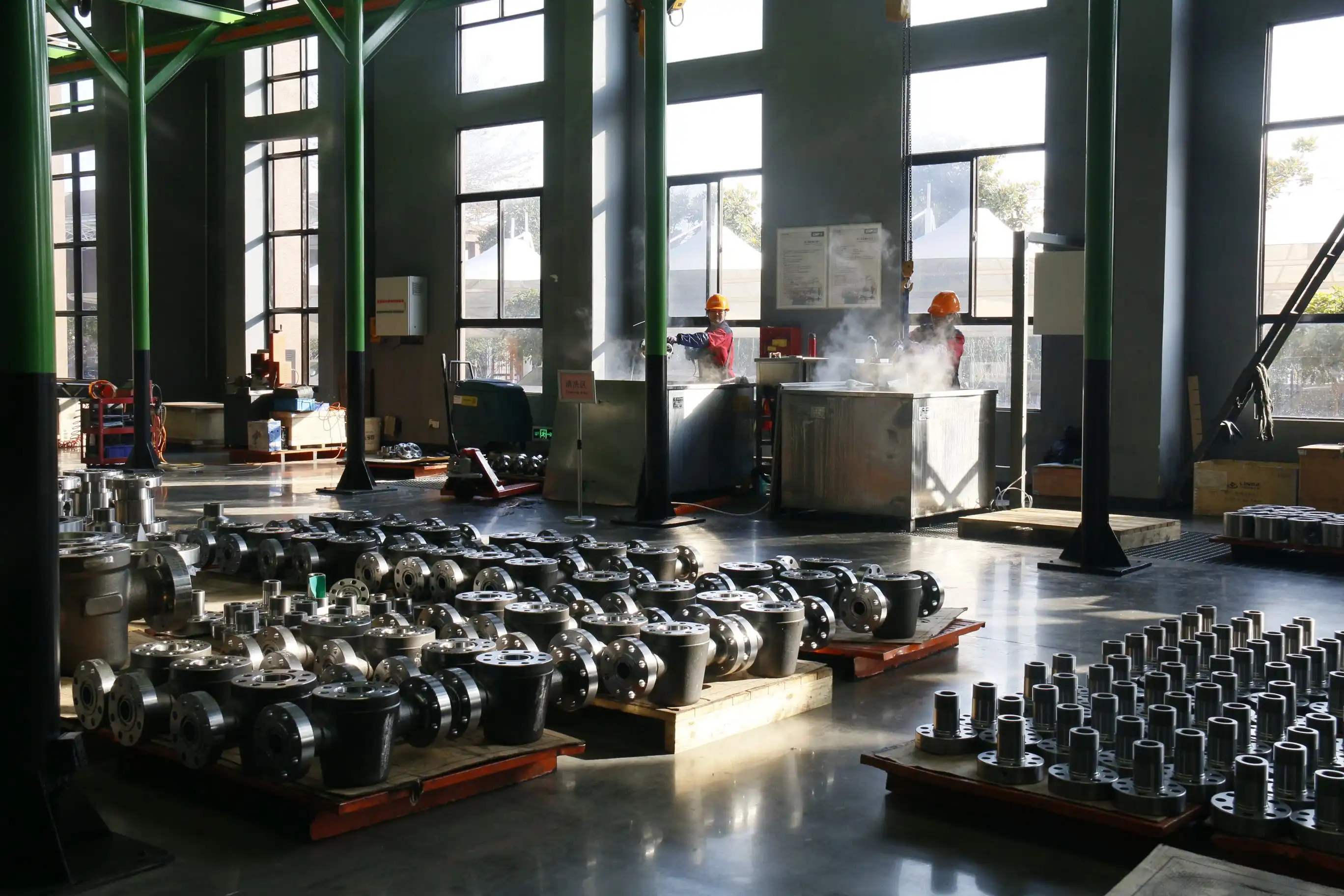
Installation, Maintenance, and Optimization Strategies
-
Professional Installation Techniques
Proper installation of Electric Ball Valves requires careful attention to several critical factors that influence long-term performance and reliability. The valve orientation must align correctly with the flow direction, ensuring optimal flow characteristics and preventing premature wear of internal components. Proper support of the valve and actuator assembly prevents stress on the valve body and connections, which could lead to leaks or mechanical failure over time. Electric Ball Valve installation includes proper electrical connections for the actuator, ensuring compatibility with control systems and providing appropriate protection against environmental factors. The installation process should include verification of actuator calibration and stroke adjustment to ensure the valve operates correctly within the specified parameters. Proper commissioning procedures verify that the valve meets performance specifications and integrates seamlessly with existing process control systems.
-
Predictive Maintenance Programs
Modern Electric Ball Valves benefit significantly from predictive maintenance programs that utilize advanced diagnostic capabilities and monitoring systems. The electric actuator's feedback mechanisms provide continuous data on valve position, operating torque, and electrical parameters that can indicate developing issues before they result in failure. Regular analysis of this data enables maintenance teams to schedule interventions at optimal times, minimizing production disruptions while ensuring reliable operation. Preventive maintenance of Electric Ball Valves includes regular inspection of sealing surfaces, actuator components, and electrical connections. The modular design of these valves facilitates maintenance operations, allowing for replacement of wear components without removing the entire valve from the system. This design philosophy reduces maintenance costs and downtime while extending the overall service life of the valve assembly.
Conclusion
Mastering flow characteristics with the right Electric Ball Valve requires understanding the sophisticated engineering and advanced technology that makes these valves essential for modern industrial applications. The combination of V-shaped sphere design, precision electric actuation, and equal percentage flow characteristics provides unmatched control capabilities for critical processes across diverse industries. From petrochemical facilities requiring precise throttling control to power plants demanding reliable shutoff capabilities, Electric Ball Valves deliver the performance, safety, and efficiency that modern operations require for success.
Cooperate with CEPAI Group Co., LTD.
CEPAI Group Co., LTD. stands as China's premier Electric Ball Valve manufacturer, supplier, and factory, offering high-quality Electric Ball Valve solutions at competitive prices. Since our establishment in January 2009, we have invested 156 million yuan in intelligent manufacturing transformation, creating the longest high-precision flexible production line in the Asia-Pacific region. Our national high-tech enterprise status and specialized certifications including API Q1, API 6A, API 6D, ISO 9001, and CE certification ensure exceptional product quality and reliability.
As a trusted China Electric Ball Valve supplier and wholesale provider, CEPAI Group delivers Electric Ball Valves for sale with exceptional durability and precision control performance. Our comprehensive product range includes Electric Control Valves, Pneumatic Ball Valves, and specialized V-type configurations designed for demanding applications. With supplier qualifications from PetroChina, Sinopec, and CNOOC, plus partnerships with industry leaders like China Datang Group and Baowu Group, we guarantee world-class manufacturing standards. Experience unmatched quality and competitive Electric Ball Valve prices by partnering with our China Electric Ball Valve factory today. Contact us at cepai@cepai.com for expert consultation and customized solutions that exceed your expectations.
FAQ
Q: What are the main advantages of V-shaped Electric Ball Valves over traditional round-port designs?
A: V-shaped Electric Ball Valves offer superior flow control with equal percentage characteristics, providing consistent performance across the entire operating range and enabling precise throttling capabilities that traditional designs cannot match.
Q: How do Electric Ball Valve actuators integrate with modern control systems?
A: Electric Ball Valve actuators accept 4-20mADC control signals and provide position feedback, enabling seamless integration with DCS and PLC systems while supporting remote monitoring and automated operation capabilities.
Q: What sealing performance standards do Electric Ball Valves meet?
A: Electric Ball Valves with metal seals meet ANSI B16.104 Level IV standards, while non-metallic seat configurations achieve Level VI performance, ensuring minimal leakage and environmental compliance.
Q: What pressure and temperature ranges can Electric Ball Valves handle?
A: Electric Ball Valves operate effectively in pressure ranges from PN16 to PN64 (ANSI 150-600), with actuators functioning reliably in temperatures from -30°C to +70°C, suitable for diverse industrial applications.
References
1. "Valve Handbook" by Philip L. Skousen - Comprehensive guide covering valve design principles and flow characteristics for industrial applications.
2. "Process Control Systems: Application, Design, and Tuning" by F. Greg Shinskey - Technical reference for control valve applications and system integration.
3. "Industrial Valves: Selection, Installation, and Maintenance" by Brian Silowka - Professional handbook covering valve technology and maintenance practices.
4. "Flow Control Manual" by Baumann Engineering - Authoritative source on flow control principles and valve sizing for industrial processes.

Get professional pre-sales technical consultation and valve selection services, customized solution services.
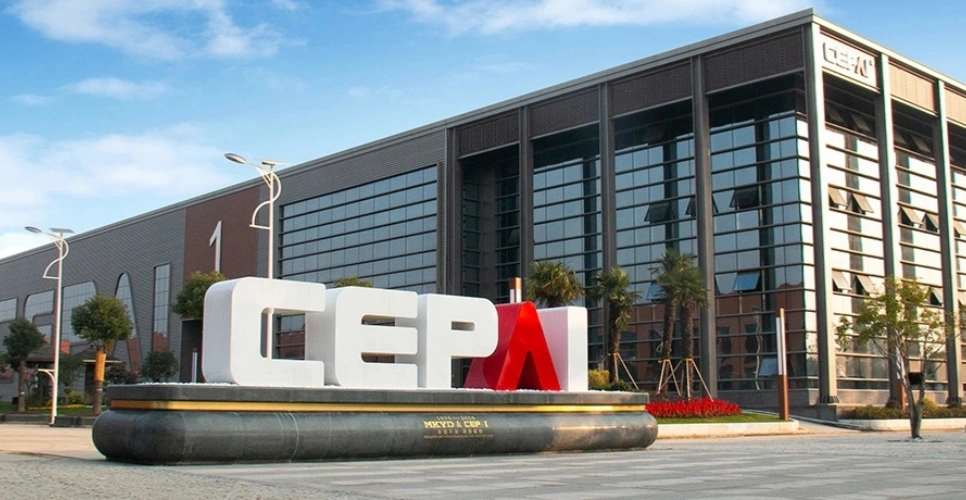
About CEPAI
